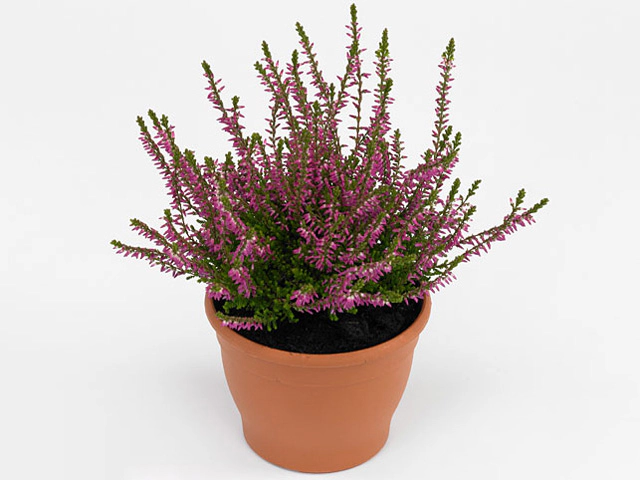Calluna vulgaris Lovely Angels Cheyenne

| soil pH requirement | Acid (pH < 4,5); Slightly acidic (pH 4,5 - 6,5) |
| Light conditions | Sunny |
| Moisture requirements | Well-drained |
| Soil type | Sandy; Humus rich; Peaty |
Heather, scientifically known as Calluna vulgaris, is a charming flowering plant that goes by several names, including Lovely Angels Cheyenne, Scotch Heather, Scots Heather, and Ling. Known for its beautiful blooms and low-maintenance nature, heather is a popular choice for garden enthusiasts.
One important aspect to consider when growing heather is the soil pH requirement. It thrives in acidic soil, with a pH level lower than 4.5. However, it can also tolerate slightly acidic conditions, ranging from pH 4.5 to 6.5. So, if you have acidic or slightly acidic soil, heather could be a perfect addition to your garden.
When it comes to light conditions, heather prefers sunny spots. It thrives when exposed to ample sunlight. So, make sure to choose a location in your garden that receives full sun for most of the day. But don't worry if your garden has areas with partial shade; heather can tolerate some shade as well.
Another crucial aspect to consider is moisture requirements. Heather appreciates well-drained soil, as it doesn't like to have its roots sitting in water. So, it's essential to ensure that the soil drains well and doesn't retain excessive moisture. However, heather also requires consistent moisture, so make sure to water it regularly, especially during dry periods.
When it comes to soil type, heather shows its versatility. It can grow in various soil types, including sandy, humus-rich, and peaty soils. This adaptability makes heather suitable for different garden environments.
To successfully grow heather, consider incorporating organic matter into the soil. Adding compost or well-rotted manure can help improve soil fertility and moisture retention, ensuring optimal conditions for the plant's growth.
Heather plants are known for their abundant and colorful blossoms, which range from shades of white, pink, purple, and even red. These flowers typically appear in late summer or early fall, providing a striking display in your garden.
One advantage of heather is its low-maintenance nature. Once established, it requires minimal care and attention. However, regular pruning is necessary to maintain its compact and tidy form. Prune heather in early spring before new growth starts, removing any dead or damaged branches.
Heather is not just aesthetically pleasing but also attracts pollinators such as bees and butterflies to your garden. Its nectar-rich flowers serve as a valuable food source for these beneficial insects.
Whether you want to add a splash of color to your garden or create a beautiful border, heather can be a fantastic choice. With its love for sunny spots, well-drained soil, and adaptability to various soil types, growing heather can be a rewarding experience for any garden enthusiast. So, consider incorporating this lovely plant into your garden and enjoy its beauty for years to come.
Market availability index by month:
| Jan. | Feb. | Mar. | Apr. | May | Jun. | Jul. | Aug. | Sep. | Oct. | Nov. | Dec. |
|---|---|---|---|---|---|---|---|---|---|---|---|
| - | - | - | - | - | 1 | 1 | 3 | 4 | 4 | 1 | - |